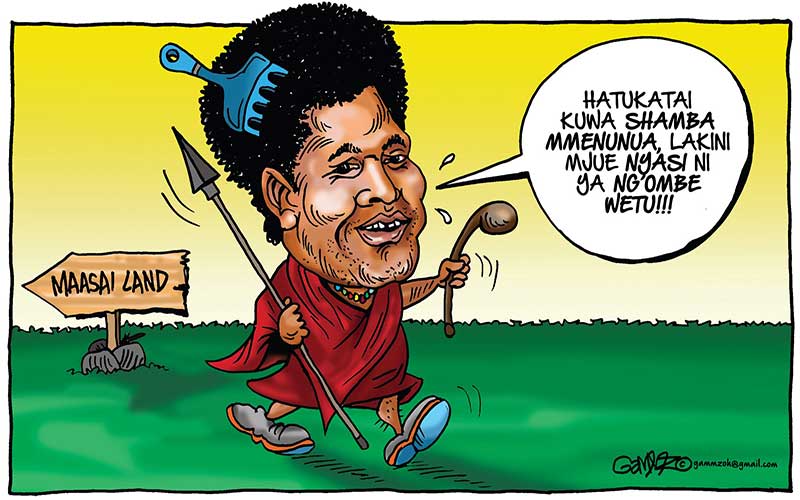
When 30,000 mourners turned out for the State funeral of former President Daniel Moi, Kenyans came together to bid bye to a man who had touched their lives.
President Moi followed in the footsteps of President Jomo Kenyatta who had inherited a disjointed and weak country, ravaged by colonialism and tribal violence, a legacy left by the Europeans who used the divide-and-rule strategy.
We all know the history of tribal tensions and the violence that has come to the forefront every so often. Few have ever been able to get a grasp of its scale. Kenyans dread every election year, which usually comes with high octane politics defined by negative ethnicity.
However, in the last few years, under President Uhuru Kenyatta’s one and a half terms, we have some one who is finally decisively attempting to deal with it, with support of fellow leaders. Never before in the history of our country have we had the political leaders of so many disparate tribes unified behind a common vision. The ‘handshake’ was arguably the first time in our history when the two biggest Kenyan leaders used their hands, not to pound a dais inciting the crowd, but to reach out and express fraternity.
It was not an easy step and Uhuru explained recently that when he and Opposition leader Raila Odinga sat down, there were hours of silence. Nevertheless, even that silence was preferable to rage and disunity.
Of course, our opposing leaders have sat together previously, but the Grand Coalition government was forced on us after the 2007/08 bloody crisis following elections.
It appears that Uhuru had decided to not just be the leader of his supporters, as so many of his predecessors were, but arguably the first President of all Kenyans, representing and reaching out to every citizen.
With the shock of the ‘handshake’ yet to settle in, Uhuru and Raila immediately got to work in putting together a practical plan of action to ensure that Kenya would from now on be moving forward, in unity, progress and development.
If Uhuru and Raila could set aside their differences for the good of the nation, then all of us can and should. The Building Bridges Initiative showed what can happen as a result. The foundational changes that are already envisioned for our nation in the report will help us develop than ever before.
Very telling
The fact that the BBI report focused on how to end ethnic division was very telling.
The report said: “If we do not find a better way to manage our diversity, particularly in the competition for power, then it will be our collective ruin. Even those who benefit from dividing us along ethnic lines will lose, and their children, and children’s children, will lose when this mode of competition runs out of room, as it eventually will.”
This was the response of the people who had met with the BBI Taskforce in every corner of our nation.
The people said loud and clear that they had had enough. They had witnessed the ‘handshake’ and Uhuru’s politics of unity and saw in it hope of a new Kenya where tribe is a source of pride, not a source of division or friction. The language in the report spoke about “competition for power” and “those who benefit” from the divisions. The people know the truth and they will no longer accept the past way of promoting ethnic antagonism for political power. Uhuru has only two years left in power, but he has thrown down the gauntlet, not just for his successor, but all of us. We must follow in these footsteps and not look back. Uhuru is telling us all to heed the call of “fuata nyayo”.
Stay informed. Subscribe to our newsletter
- The writer is a Communications consultant
 The Standard Group Plc is a
multi-media organization with investments in media platforms spanning newspaper
print operations, television, radio broadcasting, digital and online services. The
Standard Group is recognized as a leading multi-media house in Kenya with a key
influence in matters of national and international interest.
The Standard Group Plc is a
multi-media organization with investments in media platforms spanning newspaper
print operations, television, radio broadcasting, digital and online services. The
Standard Group is recognized as a leading multi-media house in Kenya with a key
influence in matters of national and international interest.
 The Standard Group Plc is a
multi-media organization with investments in media platforms spanning newspaper
print operations, television, radio broadcasting, digital and online services. The
Standard Group is recognized as a leading multi-media house in Kenya with a key
influence in matters of national and international interest.
The Standard Group Plc is a
multi-media organization with investments in media platforms spanning newspaper
print operations, television, radio broadcasting, digital and online services. The
Standard Group is recognized as a leading multi-media house in Kenya with a key
influence in matters of national and international interest.










